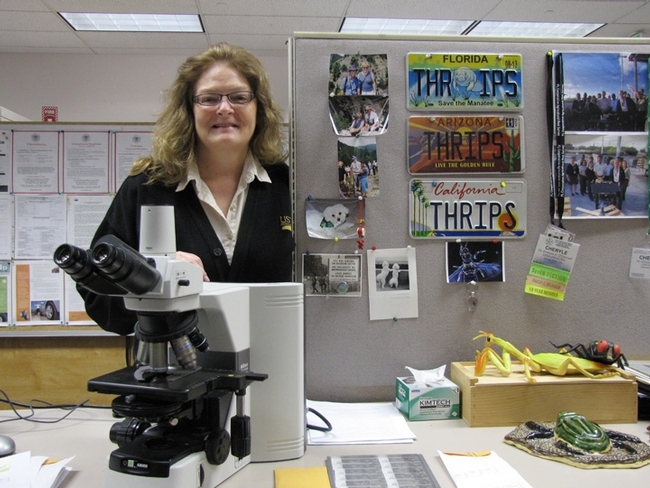- Author: Kathy Keatley Garvey
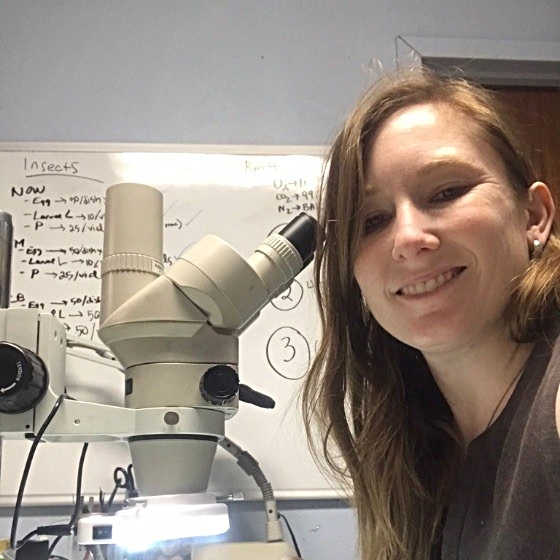
Her dissertation proposal begins at 10:30 in 122 Briggs Hall and also will be virtual. The Zoom link: https://ucdavis.zoom.us/j/
“In the proposed research, I will study the effectiveness of both automated precision spray applications and drone-mediated releases of biological control agents for the suppression of lettuce aphid and western flower thrips in several contexts," she says in her abstract. "I hope that the results of the proposed research will contribute to the development of best-use practices to guide the use of both technologies."
"I will generate novel data that fill existing knowledge gaps regarding the use of precision insecticide applications and drone releases of natural enemies in lettuce production systems. This will advance the adoption of these new pest management tools and contribute to a more sustainable integrative pest management system for lettuce."
Addie received her bachelor's degree in molecular environmental biology from UC Berkeley in 2011 and her master's degree in horticulture and agronomy from UC Davis in 2018. Before enrolling at UC Davis, she worked as a researcher under research chemist Spencer Walse at the USDA Agricultural Research Service (ARS) laboratory in Parlier, CA (2019-2021) and the UC Davis Contained Research Facility in Davis, CA (2012-2019), studying postharvest integrated pest management (IPM) of quarantine pests.
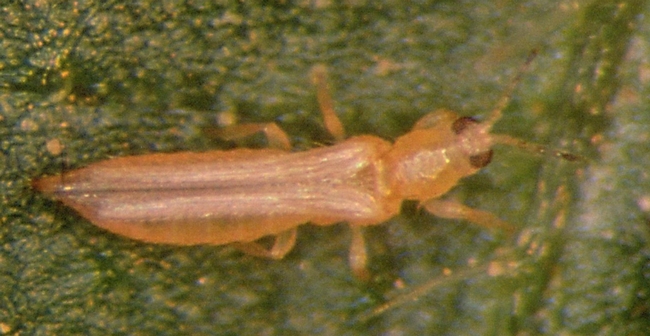
In her abstract, she noted that "Commercial lettuce production in California's central coast represents 70 percent of the production in the United States. Recent discoveries of some chemistries in ground and surface water in the Salinas valley region have placed the insecticidal chemistries used by the industry at risk of increased regulation. Automated thinner-sprayers use plant-detection sensors to apply chemical sprays directly to individual lettuce plants, so that the same amount of product to plants as a standard broadcast sprayer while potentially reducing the amount of pesticide applied per acre by up to 90 percent. Field experiments testing this technology for the control of western flower thrips (Frankliniella occidentalis) and aphids, lettuce-currant aphid (Nasovonia ribisnigri) and others, were conducted to compare the efficacy of automated sprays to a conventional broadcast application system. Experiments were conducted in conventionally managed organic romaine lettuce fields using a complete randomized block design. Prior to and at regular intervals after treatment, heads were sampled from experimental and control plots to assess pest pressure. Results from this experiment validate the use of the automated sprayers to apply insecticides for the control of aphid and thrips pests in lettuce and will be discussed in the context of developing best-use-practices for this technology."
Abrams delivered a presentation on Rearing methods for brown marmorated stink bug, Halyomorpha halys, on live host plants at the 2019 Pacific Branch of ESA, and has authored or co-authored several publications on stink bugs, including
- Ethyl formate dilution in carbon dioxide for fumigation control of the brown marmorated stink bug Halyomorpha halys, Stål (Hemiptera: Pentatomidae), Pest Management Science, 2022
- Greenhouse rearing methods for brown marmorated stink bug (Hemiptera: Pentatomidae) on live cowpea plants, Journal of Economic Entomology, 2021 (lead author)
-
Sulfuryl fluoride fumigation to control brown marmorated stink bug (Hempitera: Pentatomidae),Postharvest Biology and Technology, 2020 (lead author)
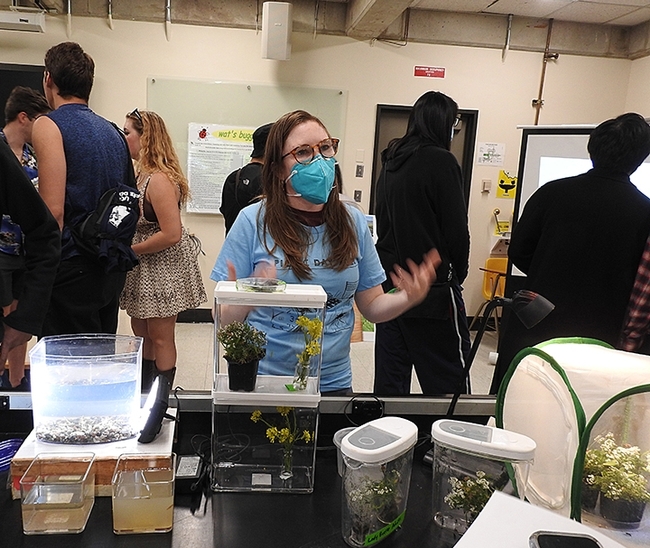
- Author: Kathy Keatley Garvey

A first-generation college student, Rajarapu holds two biochemistry degrees from Osmania University, India: her bachelor's degree (2006) and her master's degree (2008). She obtained her doctorate in entomology in 2013 from The Ohio State University, working with Professors Daniel Herms and Larry Phelan. Her dissertation: "Integrated Omics on the Physiology of Emerald Ash Borer."
Spring Seminar Schedule
Here's the seminar line-up for the spring quarter. All are scheduled from 4:10 to 5 p.m. on Wednesdays.
April 21
Chris Hamilton
University of Idaho, Department of Entomology, Plant Pathology and Nematology
Title: "Understanding Aphonopelma Diversity Across the Madrean Pine-Oak Woodlands Hotspot by Integrating Western Science and Traditional Ecological Knowledge (TEK)"
Host: Jason Bond
Zoom info
April 28
Ellen Currano
University of Wyoming, Department of Geology and Geophysics
Title: "Ancient Bug-Bitten Leaves Reveal the Impacts of Climate and Plant Nutrients on Insect Herbivores"
Host: Emily Meineke
Zoom info
May 5
Gabe Zilnik
USDA-ARS Wapato, Wash., Temperate Tree Fruit and Vegetable Research
Title: "Improving Tobacco IPM with Machine Learning"
Host: Madi Hendrick
Zoom info
May 12
Margarita López-Uribe
Pennsylvania State University, Department of Entomology
Title: "Ecoevolutionary Consequences of Crop Domestication on Plant-Pollinator Interactions"
Host: Rachel Vannette
Zoom info
May 19
Manuela Ramalho
Cornell University
Title: "Exploring Connections Among Microbial Community, Ecology and Phylogenetic History of Ants"
Host: Marshal McMunn
Zoom info
May 26
Javier Ceja Navarro
Lawrence Berkeley National Laboratory, Biological Systems and Engineering
Title: (Pending)
Host: Rachel Vannette
Zoom info
June 2
Alexandra Harmon-Threatt
University of Illinois Urbana-Champaign, Department of Entomology
Title: (Pending)
Host: Neal Williams
Zoom info
For any questions, email Ian Grettenberger (imgrettenberger@ucdavis.edu).
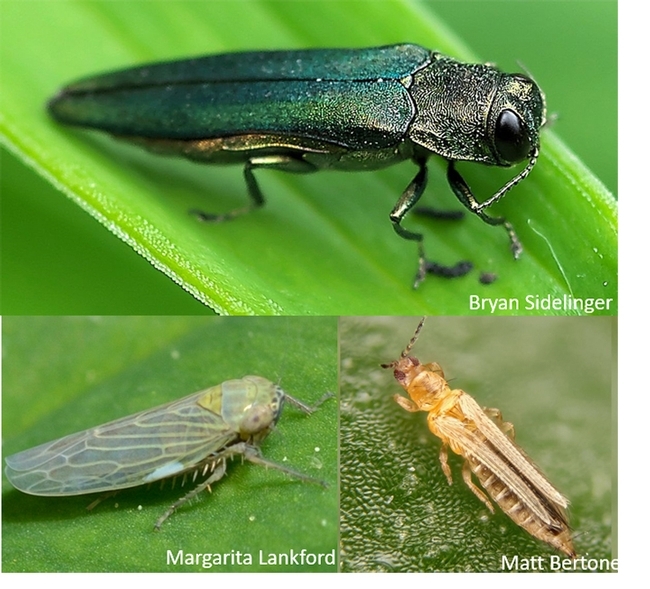
- Author: Kathy Keatley Garvey

But thrips do pack a powerful punch.
A major pest of many agricultural crops, including lettuce, they damage plants by (1) sucking their juices and (2) transmitting viruses.
If you've been following the thrips damage in the lettuce production in the Salinas Valley, or want to know more about thrips, the UC Davis Department of Entomology and Nematology's virtual seminar on Wednesday, Jan. 20 should interest you.
Research entomologist Daniel Hasegawa of the Crop Improvement and Protection Research Unit, Agricultural Research Service, U. S. Department of Agriculture, will speak on "Landscape and Molecular Approaches for Managing Thrips and Thrips-Transmitted Viruses in the Salinas Valley" at the department's first seminar of the winter quarter.
The hour-long virtual seminar, via Zoom, begins at 4:10 p.m., announced agricultural Extension specialist Ian Grettenberger, seminar coordinator. To access the seminar, fill out this Google form link at https://bit.ly/3oWYjnt. (Contact Grettenberger at imgrettenberger@ucdavis.edu.)
"In 2019-2020, lettuce production in the Salinas Valley of California was devastated by thrips-transmitted impatiens necrotic spot virus (INSV)," Hasegawa says in his abstract. "Due to the inherent challenges in managing thrips using conventional chemical tactics, and no direct means for managing the virus, there is a strong need for new management strategies."
This seminar, he says, will provide an overview of
- The challenges in managing thrips and INSV in lettuce production
- What we've learned about the epidemiology of thrips and INSV, and
- Opportunities to improve cultural practices and develop biotechnology tools, such as RNAi for managing thrips and INSV in the Salinas Valley.
Hasegawa joined the Salinas USDA-ARS team in May 2019 after serving as a postdoctoral research associate (molecular biology) for three years with the USDA-ARS in Charleston, S. C. He specializes in vector entomology, molecular biology and biotechnlogy. "My lab uses a variety of techniques to understand insect vector-virus relationships that impact plant health and agriculture," he says on Linked In. "We use molecular, genetic, and epidemiological concepts to understand drivers of vector-borne transmission of pathogens and utilize genetic technologies (e.g. RNAi and CRISPR), to improve agriculture productivity and sustainability."
Hasegawa received his bachelor of science degree in biochemistry in 2007 from UC Riverside and his doctorate in biology from Clemson University in 2013.
The mission of the Crop Improvement and Protection Research Unit is to improve germplasm of lettuce, spinach and melon, determine basic biology of viral, fungal and bacterial diseases affecting these crops, develop alternatives to methyl bromide as a soil fumigant for control of soilborne pests in strawberry and vegetables, reduce postharvest losses of lettuce, develop scientifically based organic crop production practices, and develop methods for control of weeds. (See more on the Pacific West Area website.)
"More than 90 percent of the lettuce sold in the United States is grown in California, and the majority of production from April through October occurs in the Salinas Valley, while production form November through March occurs in California's Imperial Valley," according to keepcaliforniafarming.org.
The UC Statewide Integrated Pest Management Program (UC IPM) says this about thrips: "Thrips, order Thysanoptera, are tiny, slender insects with fringed wings. They feed by puncturing the epidermal (outer) layer of host tissue and sucking out the cell contents, which results in stippling, discolored flecking, or silvering of the leaf surface. Thrips feeding is usually accompanied by black varnishlike flecks of frass (excrement). Pest species are plant feeders that discolor and scar leaf, flower, and fruit surfaces, and distort plant parts or vector plant pathogens. Many species of thrips feed on fungal spores and pollen and are often innocuous. However, pollen feeding on plants such as orchids and African violets can leave unsightly pollen deposits and may reduce flower longevity. Certain thrips are beneficial predators that feed on other insects and mites."
"Thrips can readily move long distances floating with the wind or transported on infested plants, and exotic species are periodically introduced," UC IPM notes.
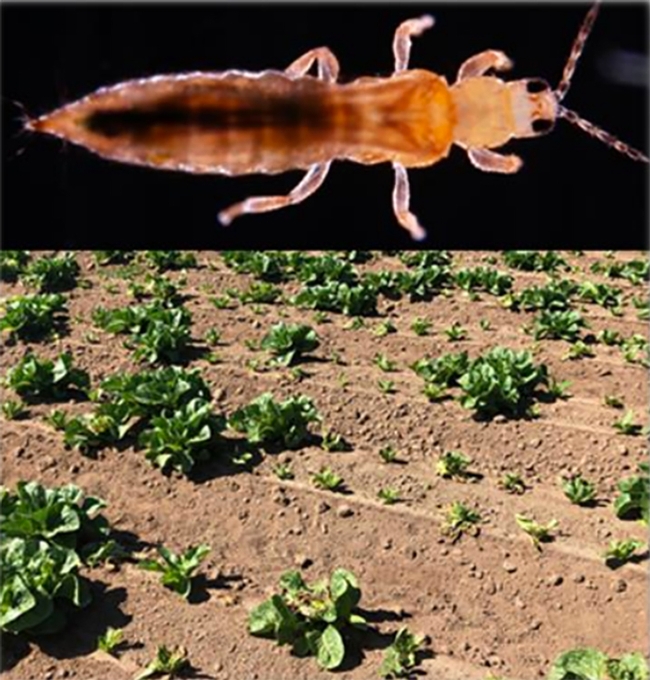
- Author: Kathy Keatley Garvey
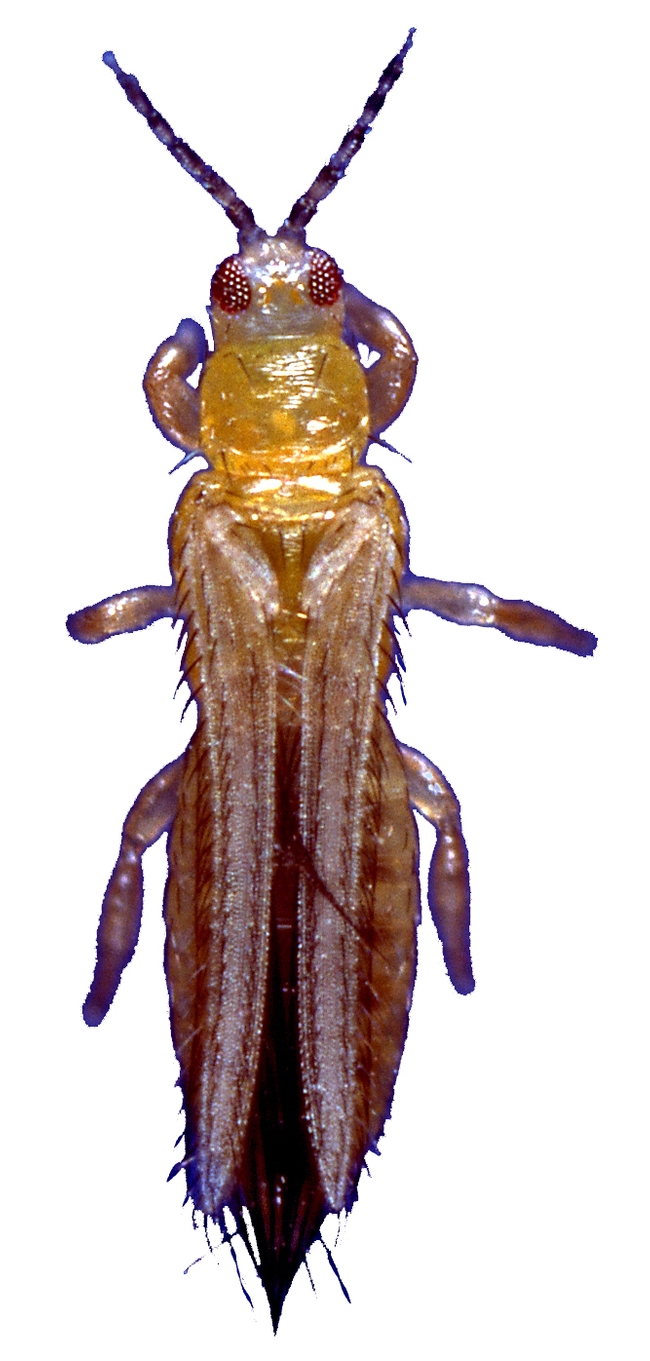
The article, “Genome-Enabled Insights into the Biology of Thrips as Crop Pests,” is published in the journal BMC Biology. It is the work of 57 scientists on five continents.
“This project represents over eight years of work by at least 17 laboratories across the globe,” said Professor Ullman, a former chair of the entomology department and a fellow of the Entomological Society of America and the American Association for the Advancement of Science. Her laboratory worked closely with project leader and first author Dorith Rotenberg of North Carolina State University. Project scientist Sulley Ben-Mahmoud of the Ullman lab is the paper's third author.
The western flower thrips, Frankliniella occidentalis, causes billions of dollars a year in damage worldwide. Native to Western North America and about the size of a pinhead, the insect feeds on a wide array of food, fiber, and ornamental crops and transmits plant viruses that cause significant economic damage.
“The western flower thrips and the viruses it transmits, including tomato spotted wilt virus, is important to California agriculture, causing serious problems for tomato growers, pepper growers and growers of leafy greens,” Ullman said. The tomato spotted wilt virus infects more than 1000 plant species, ranging from tomatoes, tobacco and peanuts to pansies and chrysanthemums.
“This system has been a central element of my research program for over 30 years," Ullman said, "and I am extremely excited to see this important resource made available as a tool to help us understand and control these important pests.”
In their abstract, the authors wrote that the publication should lead to “understanding the underlying genetic mechanisms of the processes governing thrips pest and vector biology, feeding behaviors, ecology, and insecticide resistance.”
This is the first genome sequence and analysis for a member of the Thysanoptera, an order that contains more than 7,000 species of small insects with fringed wings.
(See more information on the project on the UC Davis Department of Entomology and Nematology website)

- Author: Kathy Keatley Garvey
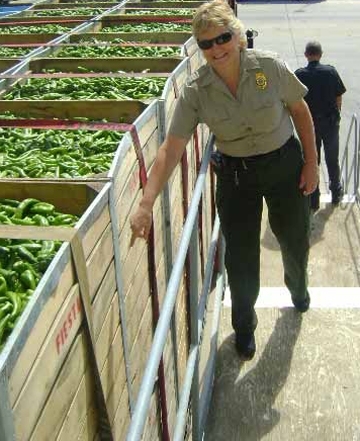
As of April 6, the former San Diego resident is the National Thysanoptera Taxonomist with the National Identification Services (NIS) at the Systematic Entomology Laboratory (SEL) in Beltsville, MD.
Specifically, her position is with the National Identification Services (NIS) of the Plant Protection and Quarantine (PPQ) program of USDA's Animal and Plant Health Inspection Service (APHIS) or what USDA officials refer to as "APHIS PPQ NIS." The Thysanoptera collection of the Systematic Entomology Laboratory (SEL) is housed with USDA's Agricultural Research Service (ARS).
“I love my work,” she said, “and I love my favorite insect, thrips.”
Thrips are tiny insects that cause billions worth of damage annually to U.S. agricultural crops. Barely visible to the naked eye, they heavily damage fruits, vegetable and horticultural crops, so much so that they can—and do--pose a biosecurity threat. In 1996, Cuba's Fidel Castro accused the United States of aerially releasing Thrips palmi over potato fields.
“Of the more than 5000 species of thrips known in the world, some are serious pests, and some are beneficial as pollinators and predators,” O'Donnell said. “Some thrips transmit plant diseases, such as the tomato spotted wilt virus and the Impatients necrotic spot viruses.”
“To monitor agricultural crops effectively, it's important to be able to identify them, but it's difficult to do so without understanding thrips taxonomy and identification,” O'Donnell said. “Thrips are so small—one millimeter long or less--that they're like a speck. Inspectors see larvae, eggs and adults on plant material coming in. It's difficult to separate species at the life stage of eggs, larvae and adult males.”
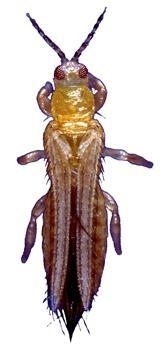
“There were many times I was doubtful that I could continue to meet the demands of my chosen field,” O'Donnell said, crediting her family, friends and UC Davis scientists with offering her the support she needed to complete her education.
O'Donnell holds three degrees from UC Davis: a bachelor's in agricultural systems and the environment (1997), a master's degree in plant protection and pest management (2000) and a doctorate in entomology (2007).
After receiving her doctorate, she joined the USDA as “the co-lateral Thysanoptera specialist, USDA-APHIS-PPQ,” west of the Mississippi. That is, she was a key thrips specialist for the Animal and Plant Health Inspection Service's Plant Protection and Quarantine Program. Her work involved detecting, identifying and intercepting thrips and other pests arriving at U.S. ports from around the world.
Her major professor Diane Ullman, a professor in the UC Davis Department of Entomology and Nematology, describes her as "a tremendously talented biologist and she holds a real fascination for thrips, their classification, host relationships and biology."
"She will do a fantastic job in this position, which will be important to the global community studying thrips and trying to develop management strategies," Ullman told us.
Read more about Cheryle O'Donnell here. She offers good advice to prospective graduate students in encouraging them to follow their dreams: "Focus on your goals, never deviate from those goals, and never allow obstacles to get in the way,” she advises. "It is a difficult and challenging path you have chosen but it will be worth all the hard work. The UC Davis community, the ‘village' which supports you, is an experience you will never forget and the payoff will be great throughout your life.”
Meanwhile, O'Donnell is anticipating two mid-May thrips conferences at the Asilomar Conference Center, Pacific Grove. One of the key organizers is Professor Ullman. See more information.
